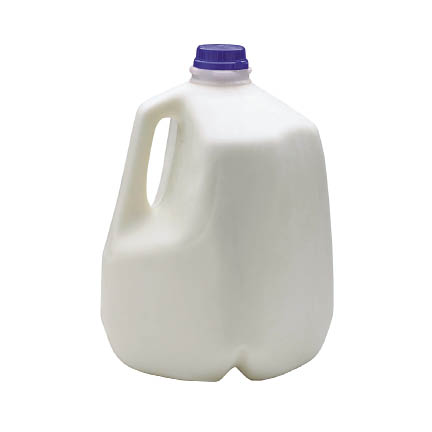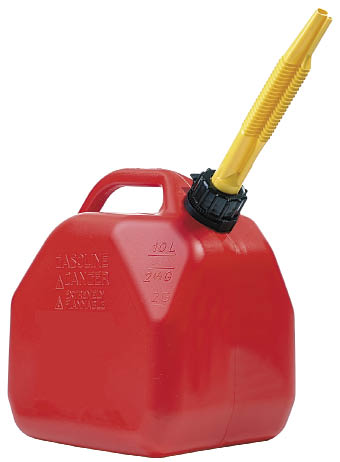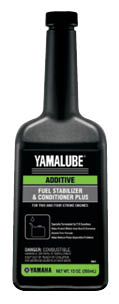Tell me if you've heard this one before: A man fires up his outboard for the first outing of the season. He didn't put any fuel stabilizer in the tank before letting the boat sit for many months. But guess what? The outboard fires right up. No problem. He tops off the tank with gasoline and takes the boat out on the water for a fun afternoon. He soon discovers getting on plane and maintaining speed takes a lot more throttle than it did last season. He doesn't recognize, though, until the engine has stopped running, that the outboard has been detonating-a dangerous and destructive result of running on fuel that has deteriorated to the point of losing its original octane rating. Ultimately, he's forced to find a tow back to the dock, and he soon learns his engine has been seriously compromised.
"This scenario plays itself out every spring," said John Wilkinson, Yamaha Marine Group customer relations representative. "Customers try to run their outboards on bad gasoline, and it ends in damage or complete engine failure."
 Gas And Milk
Gas And Milk
The best way to protect your boat from bad gasoline is to imagine that the gasoline is milk, and then ask yourself these questions:
1. Does milk last forever? No.
2. Is spoiled milk good for your body? No.
3. Does adding fresh milk to spoiled milk improve the spoiled milk? No.
4. Does adding chocolate to the spoiled milk make it okay to drink? No.
Shelf Life
Does gasoline last forever? No. Gasoline, kept in a sealed container, has a shelf life of approximately 30 to 90 days-depending upon conditions-before deterioration begins.
If you add the correct amount of fuel stabilizer, that shelf life increases to approximately one year-depending upon conditions. The process of oxidation that takes place in the gasoline causes the fuel to lose its octane rating. The octane rating is what gives the gasoline the measure of its ability to burn progressively and regularly in the combustion chamber.
 Damage
Damage
Is spoiled gasoline good for your outboard? Absolutely not. In fuel with low octane, the fuel/air mixture doesn't burn regularly and reignites in the combustion chamber after the spark plug has already tried to ignite it. It's called detonation, and it's akin to throwing rocks at the piston. It creates damage to the piston and other internal parts.
Freshen Up
Does adding fresh gasoline to spoiled gasoline improve the gasoline? No. The best thing to do with untreated (unstabilized) gasoline that has been stored for more than 90 days might be to drain it from the tank and fuel system, then refill the tank with fresh fuel before trying to start the motor.
Too Late?
Does adding fuel stabilizer to spoiled gasoline improve the gasoline? No. Fuel stabilizer can extend the storage life of gasoline, but only if the gasoline is fresh to begin with.
"There are two things boaters can do to avoid engine damage due to detonation," said Wilkinson. "Always use a fuel stabilizer, particularly when storing fuel in the off season. And if you find you have forgotten to do so, then drain the tank and fill it with fresh fuel."
Yamaha's Fuel Stabilizer And Conditioner Plus
 Yamaha's Fuel Stabilizer and Conditioner Plus provides protection for the fuel system from varnishing while maintaining octane levels during storage, through an efficient alcohol-free formula. The stabilizer product, an exclusive Yamaha formula, protects steel and aluminum components in the fuel system. Because it is a non-alcohol-based stabilizer, the product also helps prevent fuel oxidation and the absorption of water by the ethanol. The newest version of the formula is more concentrated and has a thicker look than the previous stabilizer.
Yamaha's Fuel Stabilizer and Conditioner Plus provides protection for the fuel system from varnishing while maintaining octane levels during storage, through an efficient alcohol-free formula. The stabilizer product, an exclusive Yamaha formula, protects steel and aluminum components in the fuel system. Because it is a non-alcohol-based stabilizer, the product also helps prevent fuel oxidation and the absorption of water by the ethanol. The newest version of the formula is more concentrated and has a thicker look than the previous stabilizer.
When used regularly, Yamaha's Fuel Stabilizer and Conditioner Plus is a powerful product and can make a big difference in the power and performance of an outboard.
Yamaha recommends continuous use of one ounce of Fuel Stabilizer and Conditioner Plus per every three gallons of fresh fuel for optimum performance.
For storage purposes, Yamaha recommends one ounce of Fuel Stabilizer and Conditioner Plus per every one gallon.

